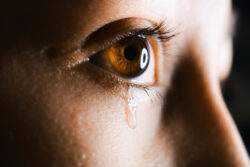Medical Negligence: Seeking Justice for Torticollis Birth Injury
This article provides an in-depth exploration of torticollis birth injuries caused by medical negligence. Highlighting the nature, causes, and prevalence of torticollis, it delves into the complexities of establishing medical negligence in these cases. Guiding readers through the legal processes, it offers valuable insights into pursuing justice for torticollis birth injuries, shedding light on the role of expert testimony and the intricacies of medical malpractice lawsuits.

Key Takeaways
- Compensation may be available for torticollis caused by medical negligence.
- Seeking legal action can help cover the costs of treatment for torticollis birth injury.
- Torticollis is a condition where a person holds their head tilted or has difficulty turning it.
- Congenital torticollis can result from abnormal positioning in the uterus or trauma during birth.
Legal Remedies for Torticollis Birth Injury
In the context of torticollis birth injury, legal remedies may include filing a medical malpractice lawsuit if negligence during labor and delivery can be established, thus providing compensation for the physical and emotional burden endured. The potential compensation could cover medical expenses, rehabilitative therapy, and psychological counseling. Additionally, non-economic damages for pain and suffering may also be factored in. To determine if malpractice occurred, a thorough investigation of the medical records is necessary, comparing the actions of the medical professionals to the accepted standard of care. Proving such a case requires a comprehensive understanding of both medical practices and legal procedures. Therefore, consulting a lawyer specialized in birth injuries is indispensable in navigating the intricacies of such a complex case.
Understanding the Nature of Torticollis
Grasping the complexities of torticollis involves the study of its two types, congenital and acquired, but also necessitates an understanding of its causes, prevalence, and the potential impacts on the individual's quality of life. Congenital torticollis, typically present at birth, can result from abnormal positioning in the uterus or birth trauma, while acquired torticollis may arise from factors such as viral infections or muscle injuries. Despite the high prevalence of acquired torticollis, congenital torticollis is rare, affecting fewer than 1% of live births. The condition's effects on quality of life underscore the need for comprehensive treatment options, which can range from physical therapy to surgery. As torticollis can be a symptom of medical negligence, understanding its causes and risk factors is crucial in pursuing legal recourse.
Identifying the Causes of Torticollis
The exploration of potential causes of torticollis, a condition marked by an abnormal head tilt, involves understanding both inherent genetic factors and external influences, such as birth trauma or viral infections. Often, the condition arises from a shortening of the sternocleidomastoid muscle, potentially due to abnormal positioning in utero or complications during childbirth. A deeper investigation into congenital torticollis reveals a correlation with first-born children and breech presentations, although the precise etiology remains unclear. Treatment options for torticollis range from physical therapy and stretching exercises to surgery in severe cases. Coping with the challenges of torticollis necessitates a comprehensive approach, combining medical treatment, psychosocial support, and potentially legal action if negligence is identified as a contributing factor.
Examining the Prevalence of Torticollis
Surprisingly, acquired torticollis is estimated to affect around 90% of people at some point in their lives, while congenital torticollis occurs significantly less frequently, appearing in fewer than 1% of all live births. The prevalence statistics of this condition make it a relevant topic in health discussions. Risk factors for congenital torticollis include breech presentations and being first-born, with uncomplicated deliveries showing an incidence rate as low as 0.3%. Acquired torticollis, on the other hand, often results from viral infections, muscle injuries, or awkward sleeping positions. Given these substantial prevalence rates, understanding the causes and risk factors of torticollis becomes essential in developing effective prevention strategies and improving the quality of life of those affected.
Establishing Medical Negligence in Torticollis Birth Injury Cases
Although proving medical negligence in torticollis birth injury cases can be complex, it is critical to establish a clear connection between the healthcare professional's actions and the injury, often necessitating expert testimony. A thorough review of medical records, labor and delivery reports, and any available imaging studies is fundamental in assessing negligence claims. Expert testimony plays a pivotal role in these cases, elucidating complex medical terminologies and procedures, and helping to establish whether the standard of care was breached. This testimony can provide a comprehensive analysis of how the healthcare provider's actions, or lack thereof, directly contributed to the birth injury. It is paramount to remember that these cases hinge on the delicate balance of medical facts and legal procedures.
Frequently Asked Questions
What Are the Long-Term Physical Effects of Torticollis?
Long-term physical effects of Torticollis can include persistent head tilt, facial asymmetry, and muscle imbalance if untreated. Chronic pain, difficulty in movement, and postural complications may also arise. Various preventive measures such as physiotherapy, stretching exercises, and positioning can mitigate these effects. In severe cases, surgical interventions may be required to lengthen the sternocleidomastoid muscle. Early diagnosis and treatment can significantly improve the prognosis and limit physical complications.
Can Torticollis Birth Injury Impact a Child’s Cognitive Development?
Torticollis impact on a child's cognitive development can vary. While primarily a physical condition, torticollis may indirectly affect cognitive development if it limits a child's exploration and interaction with their environment, crucial for cognitive growth. However, each case is unique. Comprehensive cognitive assessments are vital in monitoring development, identifying potential impacts, and planning appropriate interventions. Early detection and treatment of torticollis can optimize outcomes, minimizing potential cognitive impacts.
How Does the Process of Filing a Medical Malpractice Lawsuit for Torticollis Birth Injury Work?
Filing a medical malpractice lawsuit for torticollis birth injury involves several steps. One must first secure competent legal representation. The attorney will gather evidence, including medical records, expert opinion, and witness testimony, to build a case. The crux of the lawsuit is proving negligence – demonstrating that the healthcare provider failed to meet the standard of care, and this failure directly resulted in the torticollis birth injury. The process can be complex and lengthy, requiring patience and resilience.
What Kinds of Rehabilitation or Therapies Are Available for Children With Torticollis Birth Injury?
Rehabilitation for children with torticollis birth injury often involves physical therapy aimed at strengthening neck muscles and improving range of motion. Therapies can include stretching exercises, postural correction, and positioning techniques. In severe cases, surgical intervention may be necessary to lengthen the affected muscle. Additionally, preventive measures, such as repositioning the child's head during sleep, can alleviate symptoms and aid in recovery. Each treatment plan is tailored to the child's specific needs.
Are There Any Support Groups or Resources Available for Parents of Children With Torticollis Birth Injuries?
Yes, there are numerous resources and support groups available for parents of children with torticollis birth injuries. These provide emotional coping mechanisms and offer financial assistance opportunities. Organizations like the United Cerebral Palsy Association and Birth Injury Guide offer resources, while online forums and local community groups provide peer support. Additionally, charities and government programs can provide financial aid for medical expenses. It's important to consult with a healthcare or legal professional for guidance on these resources.
Conclusion
In summary, torticollis is a serious birth injury that can result from medical negligence. Understanding its nature, prevalence, and potential causes is integral in pursuing a legal case. Establishing medical negligence requires a meticulous examination of the standards of care, potentially through expert testimony. Therefore, victims of torticollis birth injuries should explore legal remedies to recover the necessary compensation for extensive treatment, rehabilitation, and emotional distress caused by this condition.

This post has been generated by AI and was not reviewed by editors. This is Not legal advice. Please consult with an attorney.




